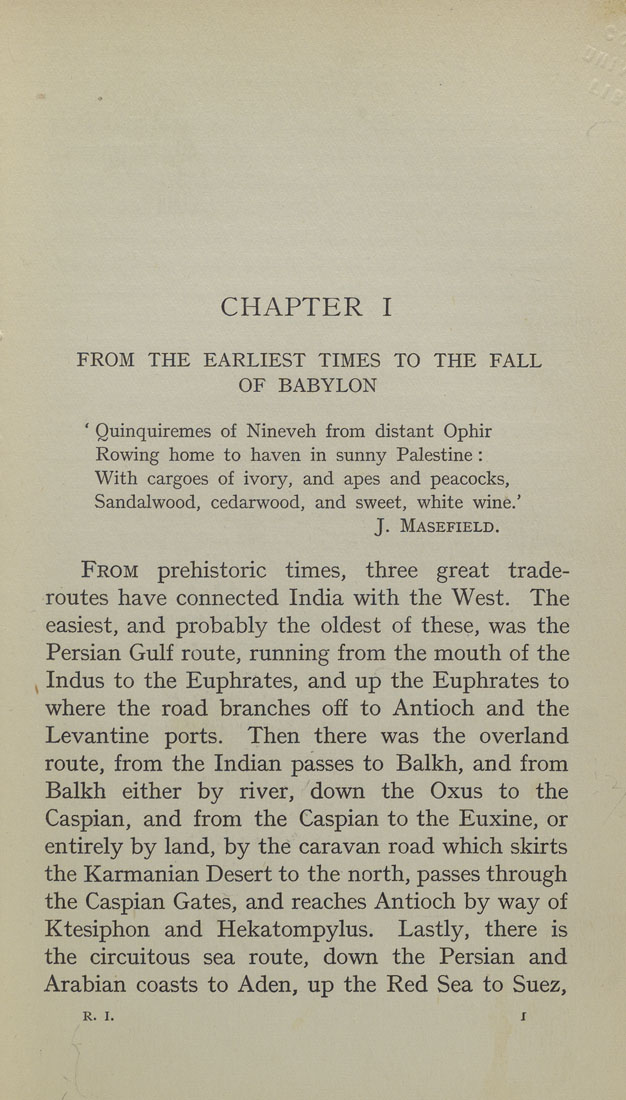CHAPTER I
FROM THE EARLIEST TIMES TO THE FALL
OF BABYLON
' Quinquiremes of Nineveh from distant Ophir
Rowing home to haven in sunny Palestine:
With cargoes of ivory, and apes and peacocks,
Sandalwood, cedarwood, and sweet, white wine.'
J. Masefield.
From prehistoric times, three great trade-
routes have connected India with the West. The
easiest, and probably the oldest of these, was the
Persian Gulf route, running from the mouth of the
^ Indus to the Euphrates, and up the Euphrates to
where the road branches off to Antioch and the
Levantine ports. Then there was the overland
route, from the Indian passes to Balkh, and from
Balkh either by river, down the Oxus to the
Caspian, and from the Caspian to the Euxine, or
entirely by land, by the caravan road which skirts
the Karmanian Desert to the north, passes through
the Caspian Gates, and reaches Antioch by way of
Ktesiphon and Hekatompylus. Lastly, there is
the circuitous sea route, down the Persian and
Arabian coasts to Aden, up the Red Sea to Suez,
|








